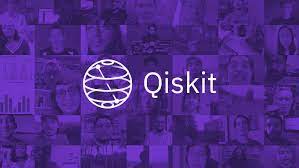Description
Introduction
Real-time digital twins integrate IoT sensors and advanced technologies to create dynamic, real-world replicas of physical systems. This approach enables continuous data flow, real-time insights, and predictive analytics, enhancing decision-making across industries.
Prerequisites
- Basic knowledge of IoT and sensor technologies.
- Familiarity with data communication protocols and networking.
- Understanding of data visualization and digital twin concepts.
- Experience with cloud platforms and edge computing is beneficial.
Table of Contents
1. Introduction to Real-Time Digital Twins
- 1.1 Fundamentals of Digital Twins
- 1.1.1 What are Real-Time Digital Twins?
- 1.1.2 Evolution with IoT Sensors
- 1.2 Benefits of Real-Time Updates
- 1.2.1 Improved Decision-Making
- 1.2.2 Enhanced Predictive Maintenance
2. IoT Sensors and Their Role
- 2.1 Sensor Types for Digital Twins
- 2.1.1 Environmental Sensors
- 2.1.2 Motion and Proximity Sensors
- 2.2 Data Collection and Integration
- 2.2.1 Communication Protocols (MQTT, HTTP)
- 2.2.2 Real-Time Data Streams
3. Building the Architecture
- 3.1 Core Components of a Real-Time Digital Twin
- 3.1.1 Data Sources and Gateways
- 3.1.2 Cloud and Edge Infrastructure
- 3.2 Integrating IoT Sensors with Digital Twin Platforms
- 3.2.1 APIs and Middleware
- 3.2.2 IoT Platforms (AWS IoT, Azure IoT Hub)
4. Real-Time Data Processing
- 4.1 Stream Processing Frameworks
- 4.1.1 Apache Kafka for Data Pipelines
- 4.1.2 Real-Time Analytics with Spark
- 4.2 Ensuring Low Latency in Updates
- 4.2.1 Edge Computing for Faster Processing
- 4.2.2 Optimizing Data Flow
5. Visualization and Interaction
- 5.1 Real-Time Dashboards
- 5.1.1 Tools for Visualization (Power BI, Grafana)
- 5.1.2 Customizable Views for Operators
- 5.2 Augmented and Virtual Reality Interfaces
- 5.2.1 AR/VR for Enhanced Interactivity
- 5.2.2 Industry Use Cases
6. Use Cases and Applications
- 6.1 Smart Cities and Infrastructure
- 6.2 Manufacturing and Automation
- 6.3 Healthcare and Patient Monitoring
7. Challenges and Solutions
- 7.1 Managing Large Volumes of Sensor Data
- 7.2 Ensuring Security and Privacy
- 7.3 Overcoming Connectivity Issues
8. Future Trends in Real-Time Digital Twins
- 8.1 Integration with AI and Machine Learning
- 8.2 Advanced Predictive Analytics
Conclusion
Creating real-time digital twins with IoT sensors transforms static models into dynamic tools for monitoring, analysis, and prediction. As industries embrace IoT advancements, these digital replicas will continue to play a critical role in optimizing operations, reducing downtime, and improving overall efficiency.







Reviews
There are no reviews yet.